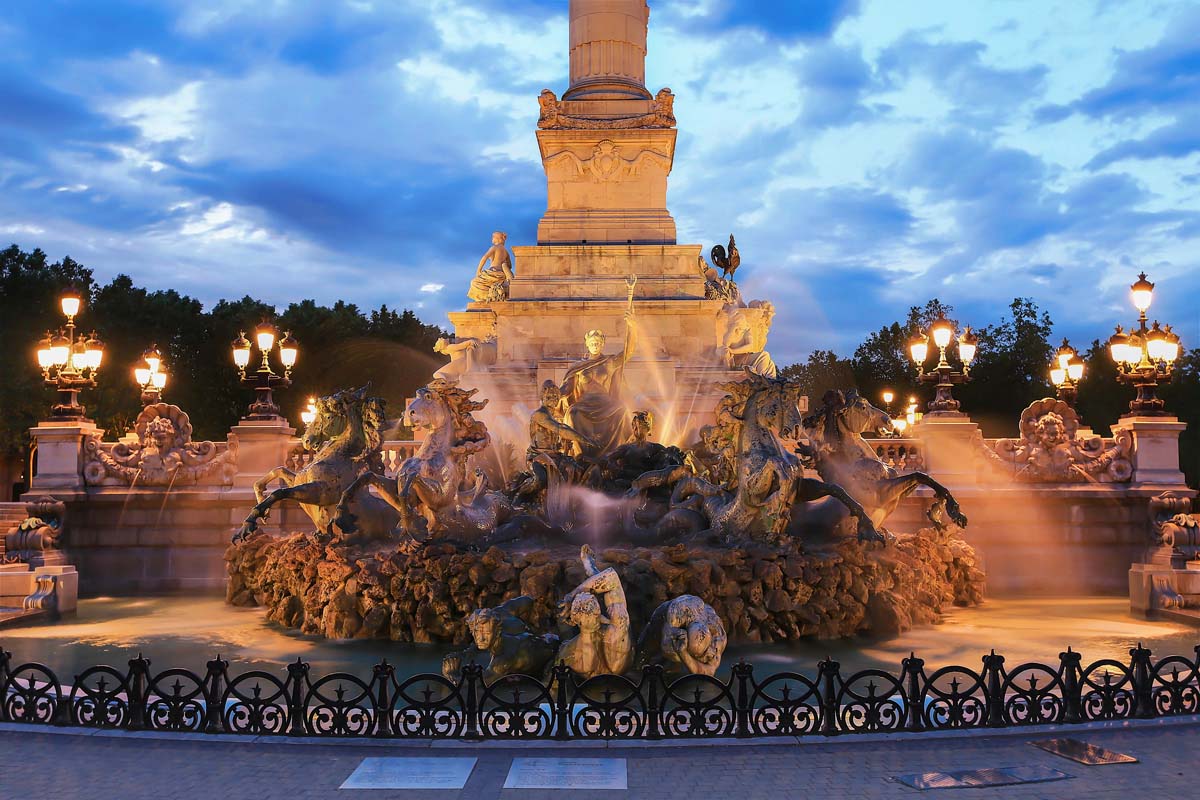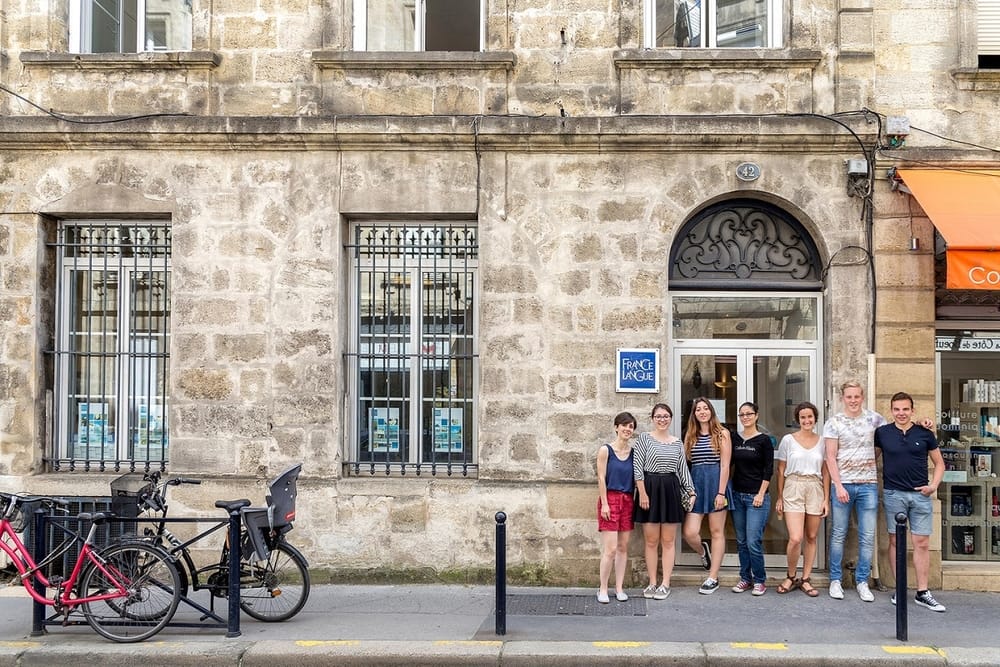Overview
Bordeaux, a city of culture, awaits you to discover its exceptional 18th Century architectural heritage, its river and its unique atmosphere. The city offers visits to its prestigious buildings and tastes of its wines that are famous throughout the world. The warmth of its welcome, its conviviality, its way of life and its gastronomy will make you fall in love with Bordeaux, a city known as the “Little Paris.” In the 18th Century, talented urban planners and architects transformed the city under the direction of the Crown. The gorgeous building facades in yellow stone, like those of the sidewalks that run alongside the Garonne River for many kilometers, and the historic monuments including the Palais Rohan, the Palais de la Bourse and the Grand Théâtre, have all preserved their authenticity and splendor. The French public gardens of the 18th Century were transformed into English-style gardens in the 19th Century, and today it is a pleasure to go for a stroll in them. Bordeaux will offer you unforgettable views and walks that are full of history, and will allow you to enter the heart of an era that has forever characterized the city.
Language Schools and Camps in this Destination
Things to Do and See During a Vacation Study
The city of Bordeaux has a rich heritage of interesting places to visit during a student’s free time. Here are some of its attractions and events:
The Wine and River Festivals
Every other year, Bordeaux celebrates its wine (in even years) and its river (in odd years) with large, international festivals that unite all lovers of great wine and gastronomy.
Place de la Bourse
Originally dedicated to Louis XV, this is an antique royal building complex which opens to the Garonne River and is one of the most classical homes of the 18th Century. It was built according to the architectural plans of Jacques and Jacques-Ange Gabriel between 1731 and 1755 by the functionary Boucher. The fountain of the Three Graces replaced the statue of Louis XV that was destroyed during the French Revolution.
Place du Parlement Sainte Catherine
This is the former home of the Royal Market, with a neoclassical fountain in the middle, and its construction continued the tradition of Bordeaux architecture in that period.
The Palais Rohan
Formerly the 18th Century Archbishop’s palace, it is currently the seat of the municipal government. It mimics the splendor of the luxury hotels of the city in its architecture and details. It is surrounded by a superb group of buildings from the end of the 18th Century.
The Grand Théâtre at Place de la Comédie
Built between 1773 and 1780 by the architect Victor Louis, it is a masterpiece of neoclassical architecture. Its performance hall, which has been restored to its original decorative state, is one of the most beautiful in the world. It also boasts a grand staircase with antique caryatids. Nearby, the Allées de Tourny offer an exceptional view of the façade and its portico with 12 huge Corinthian columns supporting statues of nine muses and three goddesses. The free and permanent “Bordeaux Monumental” exhibit is an invitation to visit the city, its monuments, its history and the main periods of its development.
The Pey-Berland Place
The Pey-Berland tower, built in the 15th Century, dominates the St. Andrew’s Cathedral. Its oldest parts date to 11th Century. It was here that the marriage of Eleanor of Aquitaine to Henry II, the King of England, took place in 1137.
The Bordeaux Public Gardens
These beautiful gardens were created by the functionary Tourny in the 19th Century. They were initially conceived as a French-style garden, then became a military camp during the French Revolution, and finally, in 1856, they were transformed into an English-style garden.
CAPC. Entrepôt Lainé
A museum of modern art.
The Marché des Grands Hommes
Bordeaux offers a vast selection of shops, boutiques, shopping centers and flea markets. Near the France Langue school, and near the center of the city, students can find the following:
The Golden Triangle, a fashionable shopping neighborhood;
The Marché des Grands Hommes, a building with a glass dome of elegant shops and a market;
Rue St. Catherine, one of the longest pedestrian shopping streets in Europe;
Rue Notre Dame for antiques aficionados.
Allées de Tourny
This grand boulevard was built in 1745 by the functionary Tourny.
Esplanade des Quinconces
The Esplanade des Quinconces occupies a large area of the riverbank, with a monument to the people of Gironde at the center and a fountain, built in the 19th Century to commemorate the revolutionaries.
The Ruins of the Palais Gallien
An ancient Roman theater.
The Aquitaine Region
Bordeaux is located in the French region of Aquitaine, with the Pyrenees mountains and other places to visit on weekends, or before or after the French course in Bordeaux.
Bordeaux Cuisine
For the glory of its wines and for the fineness of its cuisine, Aquitaine is a magnificent culinary region. The city is absolutely full of restaurants, which serve some of the gastronomic specialties of Bordeaux:
- Oysters from the Bay of Arcachon
- Sole fish from the Argent (Silver) Coast or the avocado from the Bay of Arcachon
- Crunchy Ceche (or baby eel), prepared in a Spanish style
- Eel fricassee in which garlic and parsley are mixed and lighty browned
- Lamprey fish prepared with a typical Bordeaux red wine sauce
- Grilled, freshwater bluefish caught in freshwater between April and June
- Bordeaux Sturgeon
- Foie gras
- Purple asparagus from Blayais and green asparagus from Landes
- Porcini mushrooms, slowly cooked in garlic and parsley
- Bordeaux Entrecôte cooked on the grill with parsley
- Dogfish stew accompagnied by a wine sauce and toasted rounds with garlic
- Escargot, which are typically served on Ash Wednesday
- Royans, or fresh sardines served raw or grilled
- Tourin, a garlic soup with egg yolks in the broth
- Tricandilles, pig tripe with garlic and fresh pepper
- Grenier médocain, andouillette (tripe sausage) and gratton du Lormont, a sort of terrine
- Canelé, a pastry with a crunchy, caramel exteriour and a soft center
All of which can be accompanied, naturally, by some of Bordeaux’s wines, some of the finest in the world!
How to Arrive at your Language Course
By Air
In addition to the flights on traditional carriers, low-cost flights to Paris are available on Ryanair, Easyjet, and other airlines. Students flying to Bordeaux should look for the bus from the airport that leaves about every 30 minutes and goes directly to the center of the city. It costs about €8. Otherwise, taxis cost about €35 and take about 20 minutes to reach the center.
By Train
Bordeaux is easily reachable from Paris. From the Montparnasse railway station, a high speed train goes to Bordeaux in two hours. For information about this train, please see the website of the French rail network,.
For students who arrive in Bordeaux by train, buses nº 1, 7 and 8 go directly to the city center. Otherwise, taxis are available for about €20.
For more information about visiting France in general, please see the France Guide website.
For matters relating to immigration (work, study, etc.) please see the website of the French Foreign Ministry.


